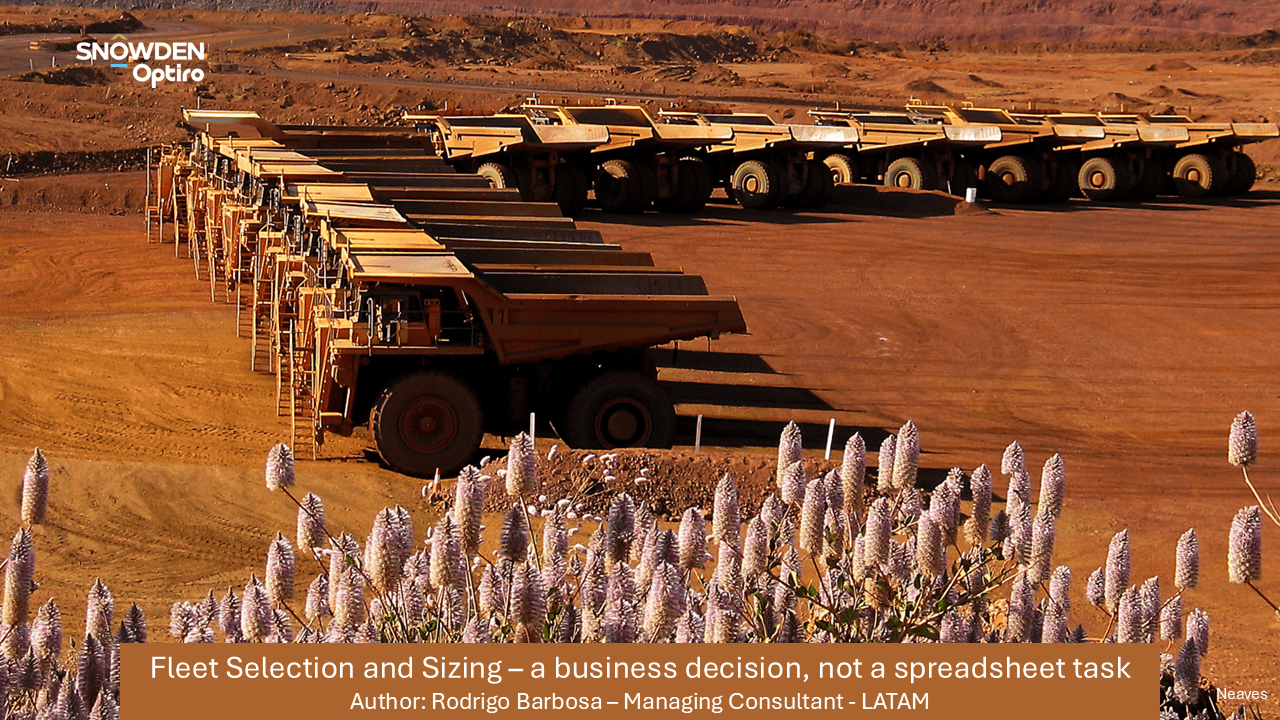

 Stockpile volumes: Remember that if you have a large stockpile, and particularly one which has a second layer on it, that you will need to increase the loose rock bulk density as compression will have occurred from trucks driving up on the broken rock. You may need to increase the loose rock bulk density by as much as 30%. It may pay to do a volume survey of a discrete area and compare this with the accurate tonnage removal (as measured off the primary crusher weightometer) to calibrate the bulk density.
Stockpile volumes: Remember that if you have a large stockpile, and particularly one which has a second layer on it, that you will need to increase the loose rock bulk density as compression will have occurred from trucks driving up on the broken rock. You may need to increase the loose rock bulk density by as much as 30%. It may pay to do a volume survey of a discrete area and compare this with the accurate tonnage removal (as measured off the primary crusher weightometer) to calibrate the bulk density.
Accounting for development volumes underground: Unless development is strictly on lines and the ore is either much wider or much narrower than the development face, the drives may meander and stripping cuts may need to be taken to straighten up the profiles. Don’t forget to account for any ore stripping in the end of month development volumes.
Grab samples from ore passes: Deriving grades from underground ore passes, especially in precious metal mines, is a hit-and-miss activity at best, and may give a woefully biased sample at worst. However, if you must sample ore passes (and it’s not recommended), lots of small samples (5-10 kg) taken over a few days, rather than one larger (20-30 kg) sample per shift.
Stockpile sampling methods that don’t work: All of them. Well, apart from processing the entire stockpile (and nothing else) through a two-stage crushing system and taking an unbiased sample through a stream cutter, a dry vezin sampler, or at a pinch, a cross-belt sampler.
Beware temporary stockpiles underground: These may be the home for parcels of ore for a few shifts and may not be part of the official stockpile list. It is very easy to miscount or double count material movements when temporary and ephemeral stockpiles are used. A robust material tracking system may help to resolve counting issues but extreme diligence is called for!
Process mapping is the key to reconciliation: The heart of a robust reconciliation system is understanding your current process flow, in terms of measurement points, stockpiles, surveys, moisture, tonnage and grade recording, materials handling and re-handling, blending and treatment of ore from diverse sources. Once you understand this then you can streamline or refine the documentation and recording.
Where is the mine/mill changeover point? Surprisingly, it’s not always at the same place at every mining operation. The logical point for the end of the mine recording (claimed tonnage and grade) is when ore goes into the primary crusher, but in some cases the ‘mine’ stream stops at the crushed ore stockpile (the cone) and in others the mill stream starts at the ROM pad. Once this transition point is fixed and understood then a deeper understanding of ‘claimed’ and ‘actual’ ensues.
Don’t ignore moisture in reconciliation! Although much of Australia is dry we do have wet spells, and any mine in the tropics or in the northern hemisphere is going to have to cope with water to a greater or lesser degree some time during the year. Every reconciliation reading needs to be on a dry tonnes basis, which means for those wet (or potentially wet) readings then moisture needs to be measured and subtracted. Thankfully this is an easy task – but often ignored.
Spreadsheets aren’t databases: Spreadsheets are the cornerstone of reconciliation reporting and analysis but are not the best repositories for raw data. Any large spreadsheet which is not locked down is almost certain to have errors, and if this is the main storage area for the raw reconciliation data then there will be problems. Databases, whether through a production tracking system or a custom industrial-strength application, are no-brainers for storing raw reconciliation data.
Who does the reconciliation? It shouldn’t matter! A robust and auditable reconciliation system is one within which the outcome doesn’t depend upon the operator. In other words, the flow and the data reduction and processing should be totally objective – any approach which relies on individual subjectivity is doomed to failure.
Reconciliation best practice: No subjectivity; a robust industrial-strength database at the heart of the system; no spreadsheets for mission-critical data; charts and colours make understanding the figures easier; practice one-page management; don’t forget moisture; customise the results and the levels of detail for the various stakeholders.
Reconciliation – getting it right the first time!
This 1-day course covers all aspects of the reconciliation process, including the key data which needs to be collected, the importance of unbiased measurement of volumes, tonnages and grades (among other metrics). Ian will show how to map out the production data flow and discuss the important measures of performance. Attendees will work on real-life reconciliation information and examine the potential sources of error. Scrutiny of the processing side of the reconciliation information provides another perspective, and a discussion of best practice highlights how efficient and useful a well-specified system can be.
Course outline
During the course you will:
Professional Development Hours Rating: This course has an 8 PD Hours rating from both the AusIMM and AIG.
 Ian Glacken – Director of Geology
Ian Glacken – Director of Geology
BSc (Hons), MSc (Min. Geol), MSc (Geostatistics), FAusIMM(CP), CEng, FAIG
Ian is a geologist with postgraduate qualifications in geostatistics, mining geology and computing who has more than 30 years’ worldwide experience in the mining industry. He has worked on mineral projects and given training courses to thousands of attendees on every continent apart from Antarctica! Ian’s skills are in resource evaluation and due diligence reviews, public reporting, training and mentoring, quantitative risk assessment, strategic advice, geostatistics, reconciliation, project management, statutory and competent persons’ reporting and mining geology studies. Ian has a strong mining production background and is a regular auditor for the world’s largest mining companies.
Contact: iglacken@snowdenoptiro.com
Subscribe here for our podcasts, technical articles and news
